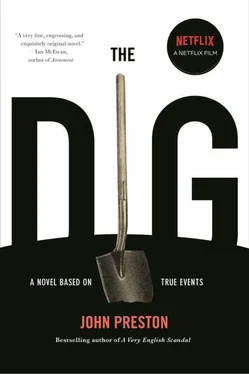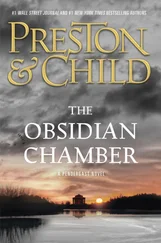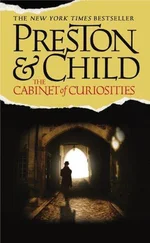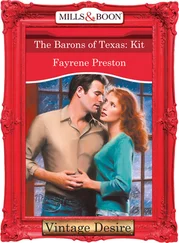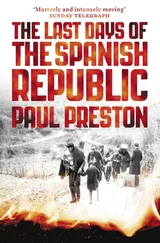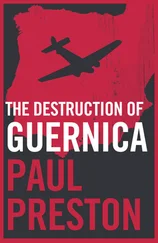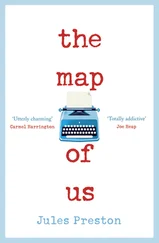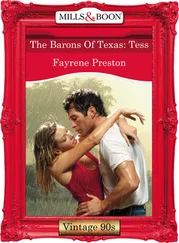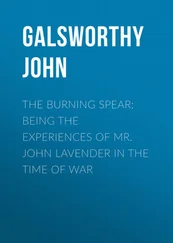After that we shook hands. Then I tucked the envelope inside my jacket, swung my leg over the crossbar and cycled off down the drive. Beyond Rendlesham, they were burning stubble. The columns of smoke were visible from miles away. Around the edges of the fields avenues had been plowed to stop the flames from spreading. Even so, a number of hedgerows had already caught fire.
Everything crackled as the wood and dry stalks burned. Along with the smell of the burning stubble, there was a deeper, darker smell of charred earth. Partridges rose wildly into the air, screeching as their nests were consumed. Rabbits and hares, terrified by the flames, ran across the road. But they were only escaping from one inferno into another. The whole landscape was ablaze. There was no longer any sign of the sun.
Ahead of me, the road rose and disappeared into a bank of gray smoke. As I rode towards it along the ash-covered tarmac, my wheels made no sound at all.
Robert Pretty
1965
EPILOGUE
For many years I did not return to Sutton Hoo. It was not a matter of deliberately staying away; there was just no reason for me to go. After my mother’s death in 1942, I was sent to Lymington on the south coast to be raised by her cousins. But although Sutton Hoo House had been sold after my mother’s death, I still retained, through deed of covenant, the rights to excavate the site.
Last autumn, I was approached with a request. The British Museum wished to reopen the mound the following summer and see if anything had been missed the first time around. They also hoped to compile a survey of the whole group of barrows. Would I give my permission for such a project? This I willingly agreed to do and work began at the beginning of May.
However, various commitments kept me from visiting until the end of June. Rather than drive up to Suffolk, I decided to take the train to Melton and walk the rest of the way. After leaving the station, I crossed Wilford Bridge, then turned right along the sandy track that runs through the woods. On the right, water meadows shelved down to the river’s edge. On the left woods rose up the bank.
I’d almost reached the estuary when it struck me that I hadn’t given a moment’s thought to the route I was following — this despite my not having been here for almost twenty-five years. Seeing Sutton Hoo House on the bluff above me, I started to climb through the trees. As I did so, I had a strange sense of something missing. For a while I couldn’t put my finger on what it was. Then I realized there were no longer any rabbits around. They had all disappeared, presumably because of myxomatosis.
As I approached the mounds, I saw that a great shelter had been erected — a corrugated-iron roof held in place by a mass of struts and scaffolding. Beneath it, the ship had been exposed once more. My first impression was how different it looked to the way I remembered. Instead of lying more or less flat in the ground, the ship now had a twisted, even agonized appearance.
This was due to a number of factors, I was told. During the early days of the war, the army had taken over the grounds of Sutton Hoo House for use as a training ground. Slit trenches had been cut in several of the mounds, while others had been used as targets for mortar practice. Later on, Sherman tanks had left deep tracks all over the site.
To make matters even worse, the ship had been left unprotected — apart from a layer of branches and a few pieces of sacking. The gunwales had disintegrated, along with the upper strakes. Rather than attempt to preserve what was left, the decision had been taken — reluctantly — to dig through the crust of sand to see if anything was buried beneath.
But first a plaster of Paris impression was being taken of the whole site. For a while I watched as white blocks of plaster were winched out of the hull on a block and tackle. Then one of the archaeologists asked if I would like to see their most recent discovery. He took me to a freshly dug pit about fifty yards from the stern of the ship.
There, in the bottom of the pit, I was astonished to see a body. It was lying on its side with its legs bent and its arms resting on its knees. The body was the same color as the sand — completely brown. Over the centuries, I learned, it had literally turned into sand. As the organic matter had decayed, so it had been replaced by what lay around. What was being defined was the shape of the flesh itself.
Yet while the outline of the body had survived, there was, in effect, nothing there. Nothing except a thin crust of sand. Inside the crust, there was no sign of a skeleton; there was just more sand. Any attempt to remove it was sure to make it crumble away in an instant. All the archaeologists could do was take samples and measurements, then fill in the grave again.
Time had blurred the body’s features into anonymity and had almost made it melt into the earth. For all that, though, it hadn’t succeeded in destroying it, not entirely. Something, if only a fragile shell, was left. At that moment, as I stared down into the pit, this felt like a consolation of sorts.
When I asked if they had any clues to the body’s identity, I was told that no grave goods had been found. Judging by the extent of the decay, it almost certainly dated from around the time of the ship-burial. But that was as far as anyone could go. Everything else was guesswork.
At lunchtime, we sat on the grass by Top Hat Wood, eating sandwiches and passing around photographs that had been taken during the 1939 excavation. Among them was a photograph of my mother. She was sitting in a wicker chair with a blanket draped over her knees, peering down into the ship. Her head was turned away from the camera and only a pale wedge of chin could be seen beneath the brim of her hat.
The archaeologists turned out to know a lot more than I did about what had happened to everyone — or almost everyone — involved in the original dig. I was delighted to hear that Mr. Brown, now in his late seventies, was still in good health. He and his wife had been over several times to see the site. Despite having injured his leg in a fall, Charles Phillips had also visited and had made a number of suggestions about how the work should be conducted. Mr. Reid Moir, it seemed, had died some years earlier. As to what had happened to his deputy, Mr. Maynard, that remained a mystery.
Mrs. Piggott had lived in Sicily for a number of years, following her divorce. There, she had married a Sicilian, but sadly this marriage had also failed. Recently, she had moved back to England and was understood to be working on the first of a projected two-volume study of Roman beads. As for Stuart Piggott, he was now Professor of Archaeology at Edinburgh University.
Nobody, however, knew the identity of the photographer. I was able to tell them that the pictures had been taken by my cousin, Rory Lomax, who had been killed in 1947, when the motorcycle he was riding collided with a lorry.
As I was leaving, another of the archaeologists said that they had been sifting through the original spoil heaps when they had found something they thought might belong to me. He went away and came back carrying an old shoebox. Inside was a rusted piece of metal with what appeared to be four wheels attached, one at each corner. Only after I had removed it from the box did I realize what it was: a single steel roller-skate. It sits on my desk now as I write this.
Robert Pretty October 1965
This novel is based on events that took place at Sutton Hoo in Suffolk in the summer of 1939. Certain changes have been made for dramatic effect. I would like to thank the following people for their help: Robert Erskine, Ray Sutcliffe, Angela Care Evans, Rosalind Cattanach, Peter Geekie, Sue Annear and Jane Eldridge. I’m especially grateful to Martin Carver, Professor of Archaeology at the University of York and Director of Research at Sutton Hoo, for taking the time to read the manuscript. Any mistakes, of course, are entirely my own.
Читать дальше
